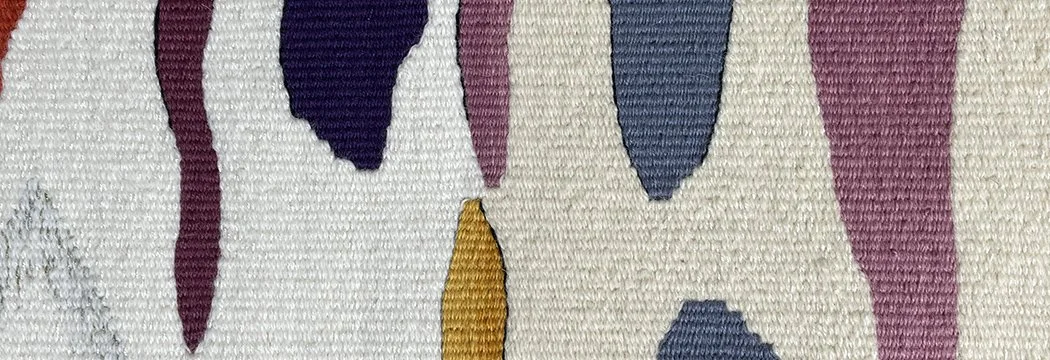The surface of your tapestry: do those bumps matter?
What materials you use for your tapestry will, to some extent, determine how much surface variation there is in your tapestry. I’m talking about the bumps you see when the strands of weft don’t quite line up.
If you use a worsted spun wool that is fairly smooth like weaversbazaar or Gist Yarn’s Array, you’ll find that you have slight variations in the surface unless you spend a lot of time lining up the yarns in your weft bundle. I’d like to suggest that these slight surface differences are just part of this medium. One of the joys of seeing tapestry in person is that you can experience these surface details and they add to the piece in most instances.
For example, I’ve been sampling Gist Array’s yarn versus my regular Harrisville Singles for a large tapestry. The background colors in the sample are wool and silk (unbleached and white in these photos). The colored bits are the yarns I’m deciding between.







